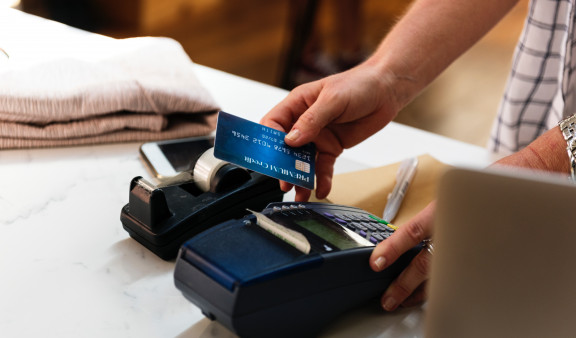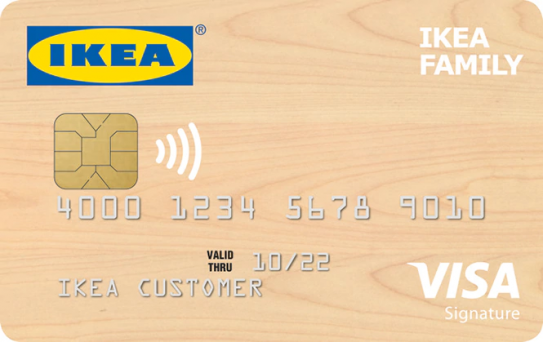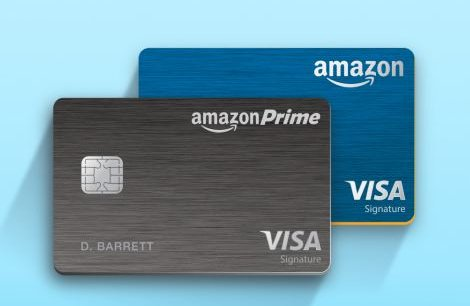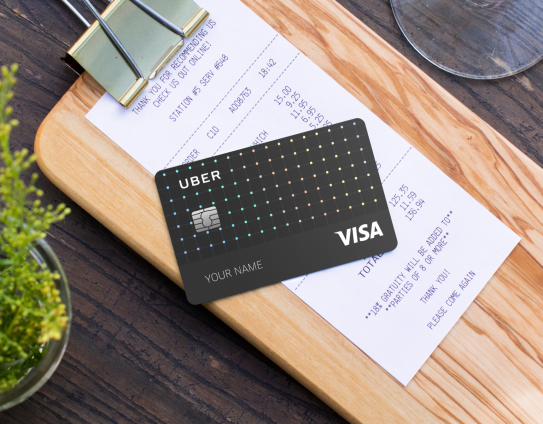
Co-branded credit cards: a new trend for brands
Last year, Starbucks announced it would work with JPMorgan Chase and Visa to launch a co-branded credit card. This card gives customers access to the Starbucks Rewards loyalty scheme.
Co-branded credit cards have become extremely popular in the United States. Before, these cards were mainly provided by airlines and hotel chains. Today, brands such as Amazon, Apple, Walmart and Uber have their own credit cards. Currently, one American in two has a co-branded card and 64% of them use their cards at least once a month. Co-branded credit cards should not be confused with branded credit cards that can only be used at points of sale belonging to the issuing brand, such as the Target REDcard and the Victoria's Secret Angel card. These brands issue their cards via direct agreements with payment system providers.
Payment system providers such as Visa and MasterCard favour co-branded credit cards in order to access an integrated customer base and a major sales channel. Many consumers are interested in the specific rewards offered at points of sale via their co-branded cards. For example, Costco customers are encouraged to opt for the card jointly developed with Visa. This year, a study conducted by the agency MBLM identified the ten brands with which American consumers identify the most. The study measured consumers' "feeling of belonging" to brands, the importance of brands in their lives and their propensity to recommend them. Among the ten best-loved brands, six have co-branded credit cards: Apple (coming soon), Disney, Amazon, Whole Foods (the Amazon Prime Rewards Visa card), BMW and Jeep.
Why are brands looking to launch co-branded credit cards
1. A card makes it possible to share revenue from credit card fees
According to the US Federal Reserve, credit cards continue to be very profitable products thanks to interest charges, subscription fees and overseas transaction fees. Furthermore, the issuing bank receives 2% of each transaction made with the card on average. By working together, banks and brands can design various monetisation systems to distribute their revenue sources. JPMorgan Chase, with which Starbucks is working, offers advantages to its partner according to the number of accounts opened, sales volume and marketing costs. Credit card issuers pay a bonus to their partner, or even the sales staff of a partner brand, each time a new customer applies for a card. Other fees can be negotiated with financial partners that provide cards, often to the advantage of the partner brand. Perhaps more importantly, co-branded cards encourage users to spend more in order to receive more rewards. According to MasterCard, Americans spend $5000 more per year with a co-branded card than holders of a conventional payment card. Reward programmes in favour of a partner brand can vary considerably from one credit card to another, and even more so given growing competition. This is what encouraged Costco to turn to Visa, which offers far more advantageous conditions. As an example, Macy’s received more than 800 million dollars from its partner CitiBank in 2012.
2. A new way to build loyalty
A report published by Nielsen in 2016 revealed that 67% of consumers buy more frequently and spend more in stores that offer loyalty schemes. Co-branded credit cards support these schemes by making it possible for customers to earn points with other brands.
3. Better quality customer data
Schemes also provide brands with access to valuable information about how and how much their customers spend. Some brands use this information to create new products or services, as well as to (re)define their pricing policy.
4. Stronger branding
Finally, launching a credit card can help improve brand image. A co-branded credit card can help a brand position itself as a major actor in the daily lives of customers by offering benefits and discounts on purchases. In today's competitive credit card market, efforts are constantly focussed on the services and benefits linked to the co-branded card in order to build the brand image. For example, the launch of the Uber card (described in more detail below) attracted much attention. Many media outlets, such as CNN, USA Today and Forbes, covered the news over the course of the week leading up to the official launch. Uber is aiming to enhance its image by providing numerous services to card holders.
Here are a few examples of co-branded cards
1.IKEA
In January 2018, IKEA announced that it would be working with Alliance Data to launch a credit card programme focussed on customer loyalty. The card enables you to make in-store purchases, buy petrol and food, and pay telephone or energy bills. It is free and offers financing options for customers carrying out major renovation work in their homes.

2. Amazon
Launched in January 2017, the Amazon Prime Rewards Visa Prime card (available to members of Amazon Prime) offers a 5% discount on all purchases made on Amazon.com. It also offers 2% cashback when paying in restaurants, petrol stations and chemists, and 1% on all other purchases. Other benefits include low overseas transactions fees, travel insurance and a 24/7 concierge service.

3.PlayStation
Gamers can make savings with the PlayStation Visa card, which was launched in October 2017. Holders earn loyalty points with all of their purchases. Points are tripled for phone bills and multiplied by five for purchases of PlayStation or Sony products. Card holders also obtain a 50% discount on their annual PlayStation Plus subscription if they make purchases worth $3000 per year.

4. Uber
In November 2017, Uber launched its Visa Uber card , with no annual fees and several benefits. Customers earn points with each purchase, which they can use to pay for Uber rides and receive money or gift vouchers. They also receive an annual subscription credit of $50 from Uber, which can be used on Spotify, Netflix or Amazon Prime. The card package also includes mobile phone damage and theft insurance, as well as additional benefits such as invitations to exclusive events.

In addition to being a new revenue stream for brands, these co-branded cards above all help build the loyalty of customers that are already attached to a brand. Furthermore, they are the first step in the transition of brands to “mobile first”. A customer who is satisfied with the benefits offered by the card will more readily turn to the brand or store's mobile app. The brand can then offer a product with three functions via its mobile app: a means of payment, a loyalty card and a reward tool all at once, which customers will be more willing to use thanks to their experience with the branded payment card.